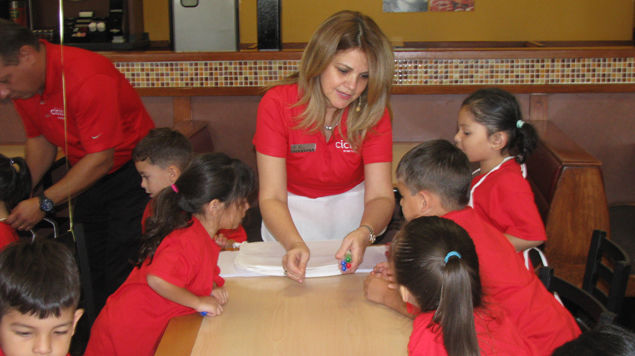EDITOR’S NOTE: This is the final installment in a Valley Morning Star series on literacy programs in Harlingen schools.
HARLINGEN — He’s smarter than you think.
That baby looking up at you with those innocent eyes isn’t the blank slate many people think he is. He’s more like a new computer which has just arrived in the home.
The supposedly “mindless” moments of joy when his mother — or his father, or his sister, or his brother — smiles at him, talks to him, sings or plays games with him are powerful tools. They’re like software programs. They’re loaded rapid-fire into the mind and soul of this new arrival.
But there’s much more to him than a simple computer. With all the knowledge being installed, this individual is also absorbing senses, perceptions and nuances into his power to imagine. These qualities extend beyond knowledge into the world of creativity and innovation.
It’s all raw knowledge and imagination, absorbed through the channels of sight, sound and other senses. Babies and toddlers hear everything said to them. Do they understand words like they will later? Of course not. But they’re making connections.
They’re learning sounds. They see those sounds as their mothers and fathers talk to them and each other. Those sounds are broken up into separate pitches. They learn to distinguish different sounds like “p”, “s”, “th”, “ph” and how they form words.
When they begin learning to read, they connect those sounds to letters, said Carmen Alvarez, early childhood specialist for the Harlingen school district.
“They have to be able to associate sounds with pictures,” Alvarez said.
The district this year has implemented a new phonics program from the Neuhaus Education Center. Phonics teaches children how sounds form words.
“Phonics is about making that letter/sound connection, like when you see that letter, you know what sound it makes,” Alvarez said.
These building blocks of literacy are established through decoding words. They learn root words, also known as base words, such as “thank.” They learn suffixes like “ful,” and how a base and a suffix can be combined to form the word “thankful.”
Words can be said to be the beginning and ending of all things, and beyond that is liberation.
Prefixes such as “over” bring us “overpass,” “overeat,” and “overdone,” and “fore” which gives us “foretell,” “forewarn,” and “forenoon.”
Children learn medial sounds like “ou” in words like “found,” “round” and “sound.” They learn the study of medial sounds can lead them on a long and distant journey, because they are placed in words which tell stories of near and far away places.
“Teach” reveals the “ea” medial sound, followed closely by “reach” “speak” and “preach.”
Songs, pictures and rhymes are used as tools to instill literacy in the young mind.
In previous years, alliterative phrases like “Peter Piper Picked a Peck of Pickled Peppers,” have been used to teach sounds. Alvarez said today’s education focus takes a different approach.
“We focus on helping children notice the initial sounds of words as well as to be able to generate words that begin with the same initial sounds,” she said. “As children begin to make the print-to-sound connection, they realize for example the words man and mom begin with the same sound, which is written with the letter ‘M.’”
Even teachers must sometimes stop to consider how many sounds are in a word like “box.”
“Box has three letters and four sounds,” said Christine Claudio, a second-grade teacher at Sam Houston Elementary.
“Most think ‘x’ has one sound, but it’s two sounds, ‘eh-ks,’” she said.
Words are constructed of so many sounds and parts they present an endless journey. This is where the base computer gives way to a child’s imaginative powers and ability to perceive information beyond the simple knowledge base.





